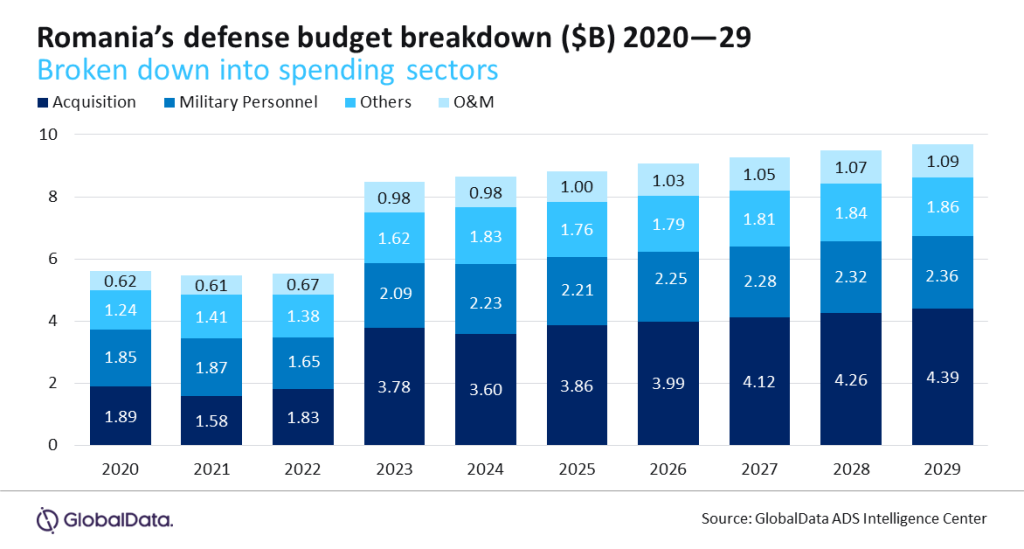As a former member of the Warsaw Pact, Romania still possesses large volumes of aging Cold War equipment. In order to meet North Atlantic Treaty Organization (NATO) standards, Romania can either outright replace such models with modern, Western equipment or heavily modify units to bring these platforms in line with NATO’s STANAG (Standardization Agreement) documents. Both options create significant business opportunities for firms interested in the Romanian market, says GlobalData, a leading data and analytics company.
GlobalData’s latest report, “Romania Defense Market 2024-2029,” reveals that, as a share of the overall defense budget, Romania’s acquisition spending is expected to rise considerably from 33.8% in 2020 to 45.2% by 2029. This exceptionally high percentage is driven by the replacement of old equipment and efforts to revitalize domestic defense production.

Wilson Jones, Defense Analyst at GlobalData, comments: “With the Ukraine War, purchasing Russian equipment parts has become both uneconomical and politically difficult, increasing the likelihood of new system acquisition, and the age of Soviet-era equipment means many of these platforms are reaching their natural end of service life. However, Romania’s limited economy and real acquisition budget limits its ability to purchase entirely new fleets of vehicles.”
Historically, Romania has opted to exercise the two options that it has to modernize its military. The Romanian Army’s TR-85 MBT is an example of modernization, originally being a licensed version of the T-55 that has now been modernized with sabot ammunition, German engines, Western fire control computers, and advanced sensors. Additionally, Romanian BMPs have been modified to carry Western armaments, simplifying logistics by making ammunition requirements common with NATO allies. At the same time, the MOWAG Piranha APC and F-35A fighter purchases are examples of new system acquisition.
Jones continues: “Romania’s defense budget until 2022 followed a trend broadly similar across most of Europe, and more specifically the NATO alliance: a period of slight fluctuation and stagnation, followed by dramatic increases as the security situation deteriorated following Russia’s full-scale invasion of Ukraine in February 2022.”
Jones concludes: “The prominent role played by cruise missile attacks and UAVs in the war in Ukraine and the complex systems required to defend against them have transformed assumptions for how 21st century wars will be fought. These lessons will inform procurement decisions in NATO states going forward. Romania is acquiring Patriot batteries and operates Gepard anti-aircraft artillery that has proven itself useful in Ukrainian service. It will likely adjust its procurement policy to these new developments.”








Be the first to comment on "Romania’s military modernization efforts to offer market entry routes for defense firms, says GlobalData"